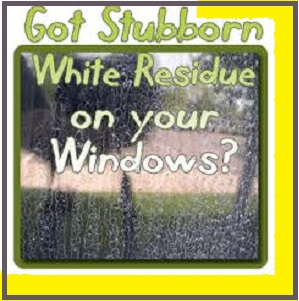Okay, so I own a Green Cleaning company and I have been getting mixed messages from customers
about using the chemical bleach. It is very irritating to the eyes and respitory system after using
Shaklee cleaning products for the past year and a half, but for some reason; I still enjoy cleaning
with it.
If I want something to get REALLY clean, I know that bleach will do the job. Not in every situation,
but in some cases when nothing else will work, bleach is my go to chemical. I use it in the bathroom
mainly and sometimes in the kitchen.
Sodium hypochlorite is the active ingredient in chlorine bleach.

It is found in household bleach and many other disinfectants. When you mix bleach with ammonia or an
acid, it will causes the release of chloramines, which generates hazardous fumes and is part of the reason the Environmental Protection Agency has found indoor air to be twice as polluted as outdoor air. Sodium hypochlorite reacts with ammonia, drain cleaners, and other acids. Many household products state that
they contain bleach on the label. Pool chemicals frequently contain calcium hypochlorite or sodium hypochlorite,
and should not be mixed with household cleaners.
So where is ammonia and acids found in the home. Ammonia can be found in glass and window cleaners, animal or human urine, in some paints. Acids in the home are more common. Products that contain acids are vinegar, glass and window cleaner, automatic dishwasher detergent & rinses, toilet bowl cleaners, drain cleaners, lime, calcium and rust removal products and brick & concrete cleaners. Bleach also reacts with some oven cleaners, hydrogen peroxide, and some insecticides.
So what are the hazards to watch out for with bleach? Well, for one, if you have kids in the home under
age 5. Make sure you have it locked away where they cannot access it. Bleach was the product most commonly associated with the injuries (37.1%) according to the most recent study in the New England Journal of Medicine and the most common diagnosis was poisoning then chemical burns and lastly dermatitis or conjunctivitis.
Children are naturally curious so if they see a brightly colored spray bottle they’ll want to see what it does, right? Which is why keeping harmful chemical cleaners like bleach up high and marked as dangerous is imperative.
A 2008 study published in Environmental Science & Technology by Dr. Mustafa Odabasi indicated for the first time that sodium hypochlorite or bleach and the cleaning agents (known as surfactants) react within the product to create chlorinated volatile organic compounds (VOCs).
The study says these chlorinated compounds are released when we clean, that most of them are toxic and probable carcinogens and that the indoor air concentrations increase anywhere from eight to 1,170 times during the use of products that contain bleach.
The increase in chlorinated VOCs was lowest for plain bleach and highest for thick liquids and gels. What matters with bleach are the amount, strength and method of exposure to it.
Sodium hypochlorite is also used to purify our drinking water and is a mighty powerful disinfectant. It is a reactive chemical that it will degrade before long, and if it dries completely, you’re left with table salt. The
chemical formula for bleach is NaClO.
So, my main point is, bleach is okay to use in the home for specific purposes and it is okay if it is diluted. The main thing is to be careful not to mix with with ammonia or an acid. If you have children in the home, make sure to lock it up or put it up high where children under 5 cannot get to it. A little bit of caution and common sense goes a long way with this strong & powerful cleaning agent.
=========================
11/10/12
Okay, so this is a continuation of the blog post. I have been researching this issue and I don’t think bleach is all that bad. We just had some pressure washing guys come to our house and clean our driveway, sidewalks, etc and I did a cleaning test with them. We used my Basic H organic cleaner and did a spot test. We added water and it seemed to get some of the dirt out of the sidewalk but would take a lot of scrubbing. Then the guys added a spot test of bleach and added water. The bleach water immediately bubbled up and brought the dirt up to the surface. It also turned yellow and changed colors unlike my basic H & water. After 10 seconds it was easy to see who was the clear winner of the dirt test.
So that being said, is there anything really toxic about bleach to the environment? Is it toxic at first (acidic) and then becomes more basic as time goes on? I guess I really need to speak with a chemist about this. The chemical composition of Bleach is NaCl…right? So that is Sodium and Chloride if I remember correctly from my High School Chemistry class. I know Sodium is not toxic, what about Chloride or Chlorine? Okay, so if anybody knows the answer to this question please answer this blog post.
Thank You!





